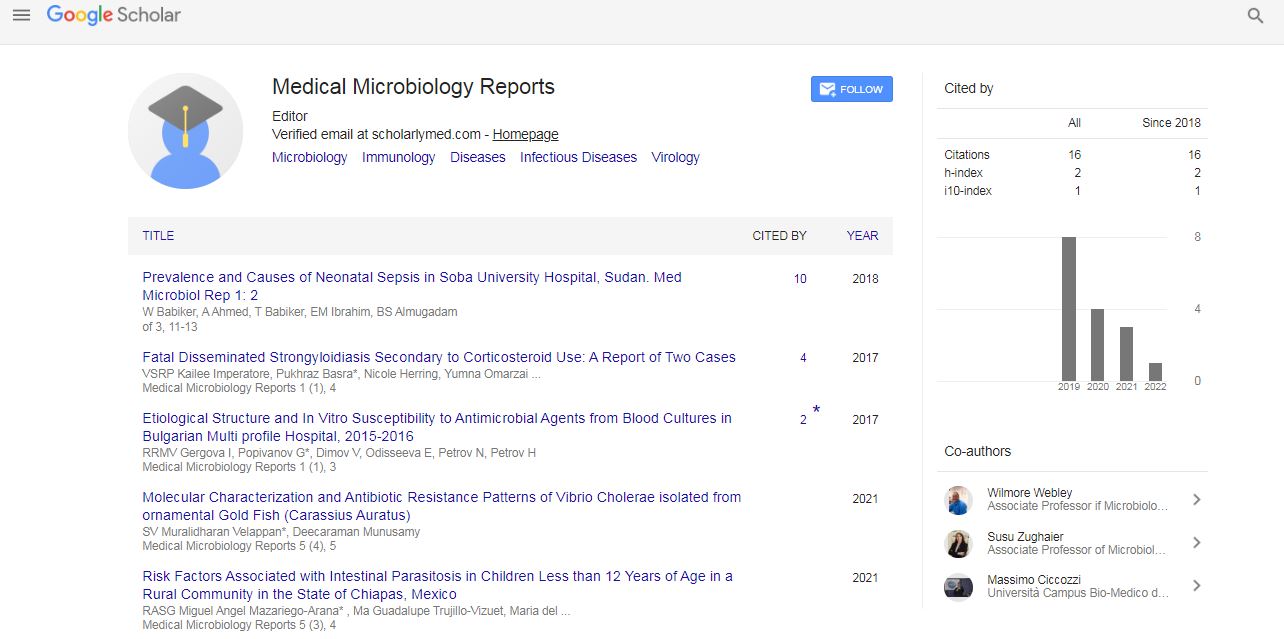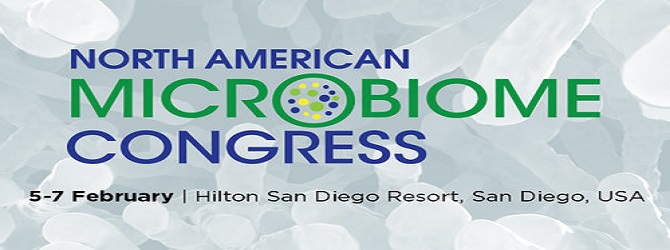Short Communication, Med Microbiol Rep Vol: 5 Issue: 2
Market Analysis Clinical Microbiology 2021
Abstract
Applied Microbiology size was valued at over USD 24.3 billion in 2017 and will exceed USD 675.2 billion with 7.9% CAGR from 2017 to 2024. At Global Market Insights, it's a singular blend of primary and secondary research, with validation and iterations, so as to attenuate deviation and present the foremost accurate analysis of the industry.
Rising demand of latest technologies will drive the biotechnology industry size. we’ve seen tremendous growth and alter within the industrial diagnostics industry, particularly within the food safety sector expertise altogether aspects of the market, plus extensive experience in business management, strategy development and international business, microbiology test volumes, market values and methods employed by food producers round the world, supported detailed interviews with quite 450 food production facilities in America, Europe and Asia, including Japan. Total test volumes have increased 128%, and testing for specific foodborne pathogens like Salmonella and E. coli grew at an even faster rate.
Keywords: Bacteriology, Virology, Immunotherapies, Microbiology
Applied Microbiology size was valued at over USD 24.3 billion in 2017 and will exceed USD 675.2 billion with 7.9% CAGR from 2017 to 2024. At Global Market Insights, it's a singular blend of primary and secondary research, with validation and iterations, so as to attenuate deviation and present the foremost accurate analysis of the industry.
Rising demand of latest technologies will drive the biotechnology industry size. we’ve seen tremendous growth and alter within the industrial diagnostics industry, particularly within the food safety sector expertise altogether aspects of the market, plus extensive experience in business management, strategy development and international business, microbiology test volumes, market values and methods employed by food producers round the world, supported detailed interviews with quite 450 food production facilities in America, Europe and Asia, including Japan. Total test volumes have increased 128%, and testing for specific foodborne pathogens like Salmonella and E. coli grew at an even faster rate.
Market Overview:
Several microorganisms are utilized in industrial microbiology, including laboratory selected mutants, present organisms, and genetically modified organisms (GMOs). Microbiology research and development is finding increasing application in oil and gas organizations, the food and beverage industry, and environmental testing organizations.
In addition, the traditional R&D in the biopharmaceutical industry is witnessing an upsurge, due to drug development research, which is helping in the augmentation of the industrial microbiology market.
Increased demand for nutraceuticals and other fermented products further drives the importance of industrial application of microbiology on a large scale. Such factors are helpful to drive the economic market.
However, within the market, there are several conflicts observed regarding the usage of genetically modified organisms in food sources, which are expected to limit the expansion of the economic microbiology market.
Industry Insights:The global clinical microbiology market size was valued at USD 9.1 billion in 2016 and is predicted to develop at a CAGR of 6.7% over the forecast period. Constantly rising incidence of infectious diseases is driving market growth.
Infectious diseases are primarily diagnosed using clinical tests. According to the Centers for Disease Control and Prevention (CDC), around 9,421 new cases of tuberculosis, 51,455 new cases of salmonella, 33,461 new cases of Lyme disease, and 433 new cases of meningococcal disease were registered in U.S. in 2014.
Lack of trained graduates and training programs is a problem particularly in developing countries, where demand for skilled professionals is rapidly increasing. However, entry of automated systems within the market goes to exchange manually
operated conventional platforms in future, thereby reducing the impact of lack of skilled professionals.
Driver: Technological advancement in diseases diagnostics:
Several emerging molecular diagnostic techniques are increasingly getting used for early detection also because the effective treatment of pathogen
borne diseases. Advanced molecular diagnostic techniques offer several technological benefits like faster turnaround, high sample throughput, multiplexing of reaction, specificity, better accuracy, and increased device sensitivity as compared to traditional laboratory techniques. Advanced molecular diagnostic techniques like NGS, real time PCR, molecular cartridges, and PCR including mass spectrometry are increasingly being recognized for his or her capabilities within the identification and characterization of several pathogens also as within the analysis of multiple samples during a single run. This has resulted within the increased preference also because the growing adoption of those products among key end users, including healthcare providers (such as hospitals and microbial and clinical centers), research laboratories, and pharmaceutical and biotechnology companies.
The development and commercialization of pathogen specific reagent/diagnostic kits have led to raised sample utilization also because the adoption of a well defined clinical methodology for specific disease diagnosis. In line with the changing end user preferences, many prominent product manufacturers are that specialize in developing and commercializing innovative and technologically advanced molecular diagnostic products for communicable disease diagnosis.
Restraint: Limited reimbursement policies for microbiology testing procedures:
Clinical microbiology testing procedures aren't adequately reimbursed across several countries like India, China, and other emerging countries within the Middle East and Africa, which have a high target patient population base. This is a serious factor that limits the preference for clinical microbiology products among patients and healthcare professionals. This directly affects the adoption of premium priced clinical microbiology products, thereby negatively affecting their market growth. Laboratory tests performed for in patients are reimbursed alongside diagnosis related group payment only, whereas reimbursements for out patient laboratory tests are made locally. The lack of national standardization for reimbursements results in significant variation at the regional level. The adoption of microbial tests within the US is further restricted thanks to limited coverage for operational costs for these test procedures, restricted research use only (RUO) diagnostic products, and the slow inclusion of newly developed microbial test procedures in CPT codes for medical reimbursements.
Opportunity: Improving healthcare infrastructure across emerging countries:
Emerging markets are expected to supply significant growth opportunities to clinical microbiology product manufacturers and distributors during the forecast period. This can be attributed to the growing prevalence of infectious diseases such as HIV, tuberculosis, influenza, and malaria as well as increasing R&D initiatives to develop innovative genomic techniques for efficient disease diagnosis in developing nations.
The growth in these markets is further supported by improvements in healthcare infrastructure, growing healthcare expenditure, and increasing availability and affordability of low cost clinical microbiology products. In line with the continued trend, several government initiatives are undertaken across emerging markets (particularly in China and India) to strengthen and expand the healthcare infrastructure.
Report Coverage & Deliverables:
PDF report & online dashboard will help you understand:
• Competitive benchmarking
• Market forecasts
• Company market shares
• Market opportunities
• Latest trends & dynamics

 Spanish
Spanish  Chinese
Chinese  Russian
Russian  German
German  French
French  Japanese
Japanese  Portuguese
Portuguese  Hindi
Hindi 
